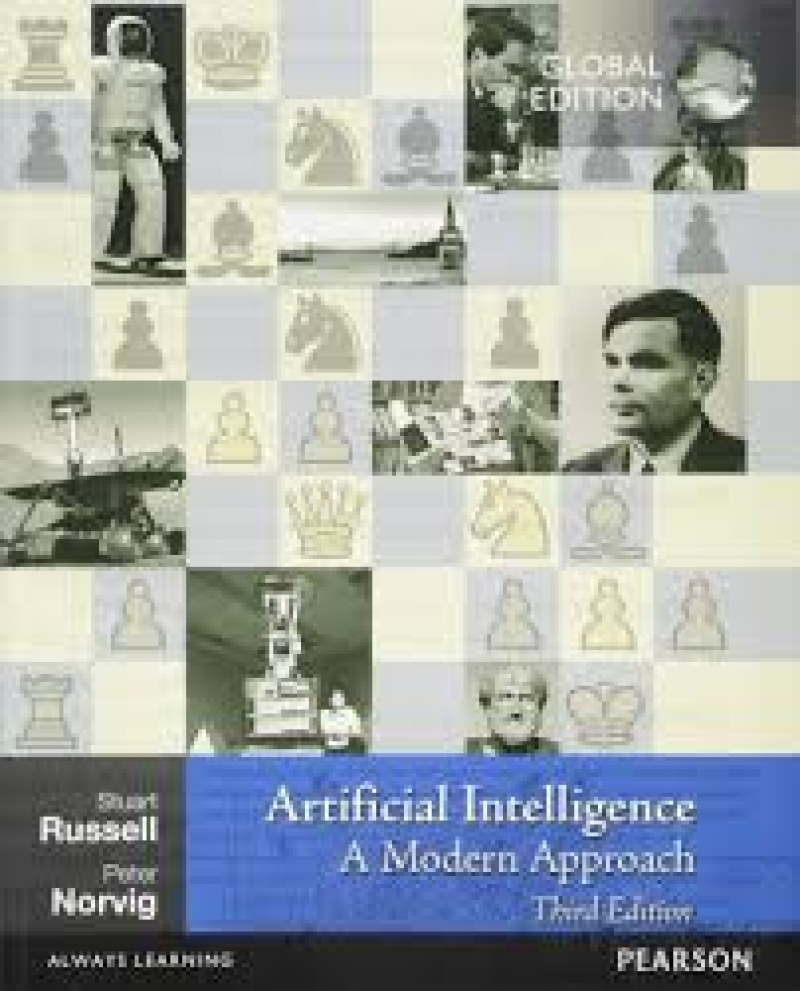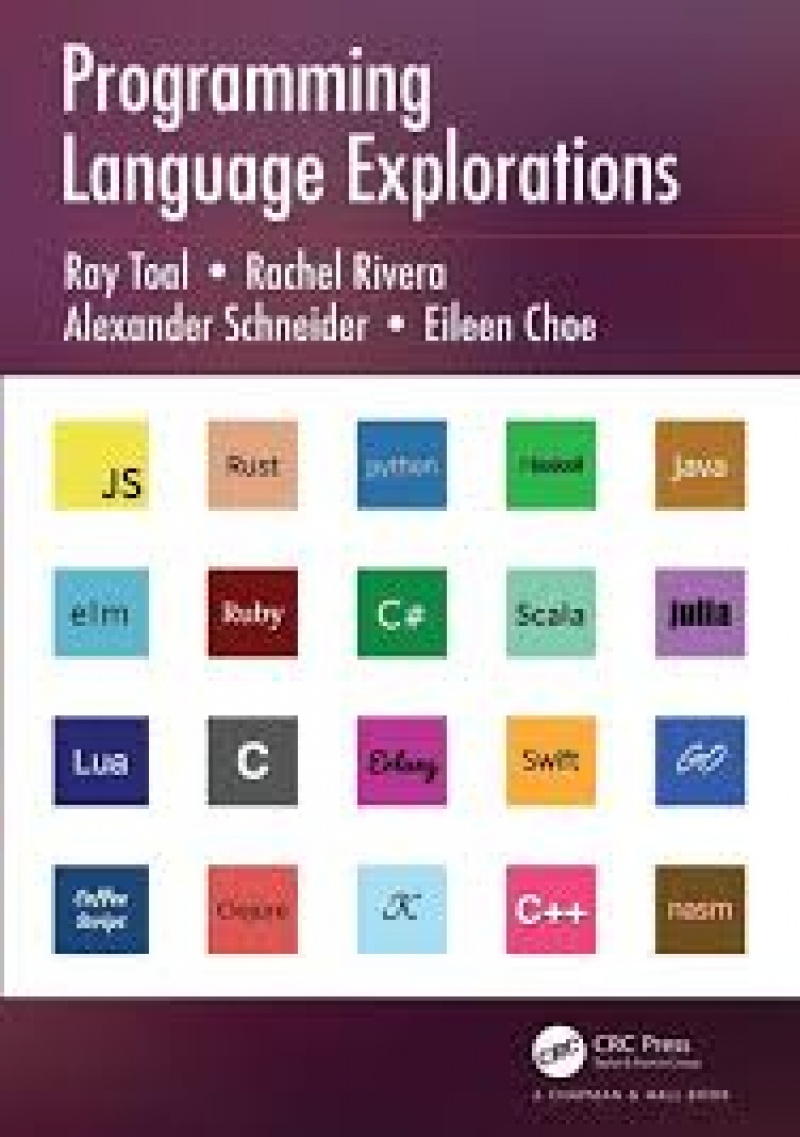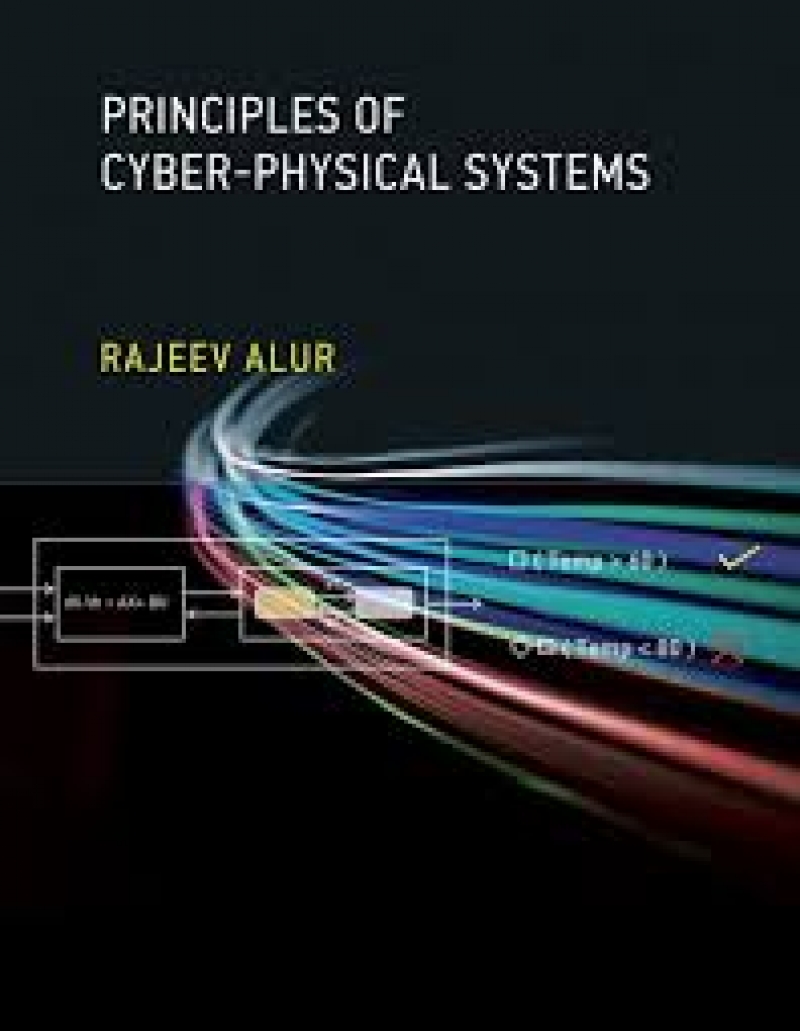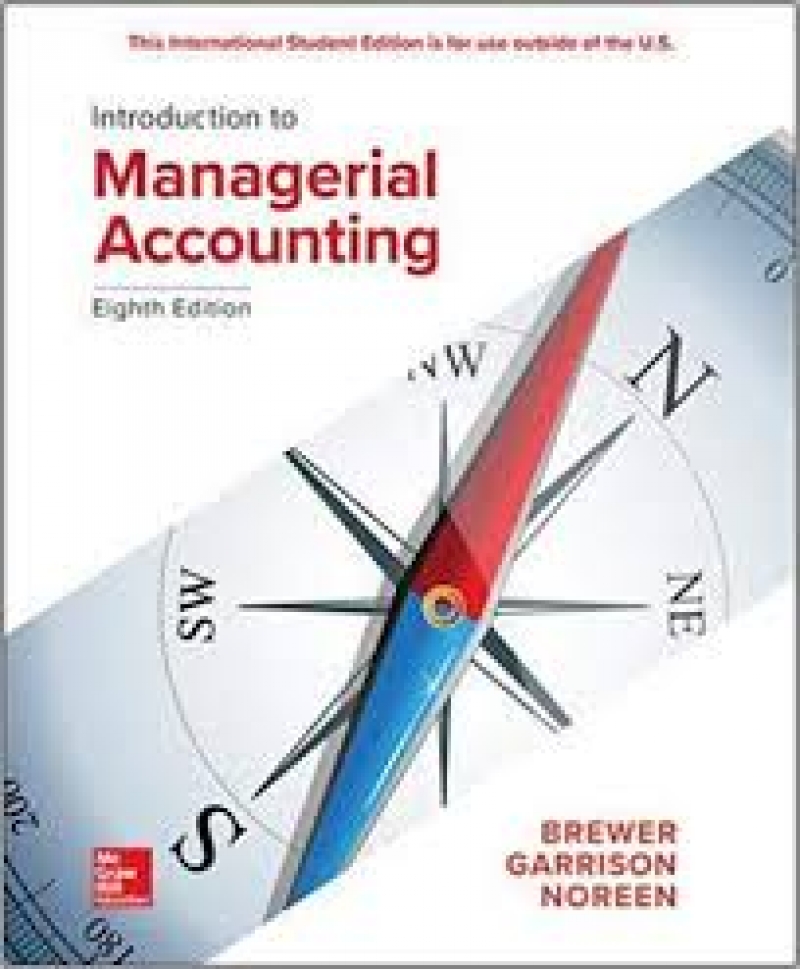
Artificial Intelligence: A Modern Approach, 3rd Edition, Global Edition
Deskripsi Buku
This edition captures the changes in AI that have taken place since the last edition in 2003. There have been important applications of AI technology, such as the widespread deployment of practical speech recognition, machine translation, autonomous vehicles, and household robotics. There have been algorithmic landmarks, such as the solution of the game of checkers. And there has been a great deal of theoretical progress, particularly in areas such as probabilistic reasoning, machine learning, and computer vision. Most important from the authors' point of view is the continued evolution in how we think about the field, and thus how the book is organized. The major changes are as follows:
More emphasis is placed on partially observable and nondeterministic environments, especially in the nonprobabilistic settings of search and planning. The concepts of belief state (a set of possible worlds) and state estimation (maintaining the belief state) are introduced in these settings; later in the book, probabilities are added.
In addition to discussing the types of environments and types of agents, there is more in more depth coverage of the types of representations that an agent can use. Differences between atomic representations (in which each state of the world is treated as a black box), factored representations (in which a state is a set of attribute/value pairs), and structured representations (in which the world consists of objects and relations between them) are distinguished.
Coverage of planning goes into more depth on contingent planning in partially observable environments and includes a new approach to hierarchical planning.
New material on first-order probabilistic models is added, including open-universe models for cases where there is uncertainty as to what objects exist.
The introductory machine-learning chapter is completely rewritten, stressing a wider variety of more modern learning algorithms and placing them on a firmer theoretical footing.
Buku Terkait
2017
RESOURCE CENTRE UNIVERSITAS AMIKOM YOGYAKARTA
2017
RESOURCE CENTRE UNIVERSITAS AMIKOM YOGYAKARTA
2001
RESOURCE CENTRE UNIVERSITAS AMIKOM YOGYAKARTA
2015
RESOURCE CENTRE UNIVERSITAS AMIKOM YOGYAKARTA
2015
RESOURCE CENTRE UNIVERSITAS AMIKOM YOGYAKARTA
2016
RESOURCE CENTRE UNIVERSITAS AMIKOM YOGYAKARTA
2017
RESOURCE CENTRE UNIVERSITAS AMIKOM YOGYAKARTA
2017
RESOURCE CENTRE UNIVERSITAS AMIKOM YOGYAKARTA
2017
RESOURCE CENTRE UNIVERSITAS AMIKOM YOGYAKARTA
2016
RESOURCE CENTRE UNIVERSITAS AMIKOM YOGYAKARTA
2017
RESOURCE CENTRE UNIVERSITAS AMIKOM YOGYAKARTA
2017
RESOURCE CENTRE UNIVERSITAS AMIKOM YOGYAKARTA
2017
RESOURCE CENTRE UNIVERSITAS AMIKOM YOGYAKARTA
2017
RESOURCE CENTRE UNIVERSITAS AMIKOM YOGYAKARTA
2016
RESOURCE CENTRE UNIVERSITAS AMIKOM YOGYAKARTA
2016
RESOURCE CENTRE UNIVERSITAS AMIKOM YOGYAKARTA
2009
RESOURCE CENTRE UNIVERSITAS AMIKOM YOGYAKARTA
2012
RESOURCE CENTRE UNIVERSITAS AMIKOM YOGYAKARTA
2015
RESOURCE CENTRE UNIVERSITAS AMIKOM YOGYAKARTA
2017
RESOURCE CENTRE UNIVERSITAS AMIKOM YOGYAKARTA
2016
RESOURCE CENTRE UNIVERSITAS AMIKOM YOGYAKARTA
2016
RESOURCE CENTRE UNIVERSITAS AMIKOM YOGYAKARTA
2016
RESOURCE CENTRE UNIVERSITAS AMIKOM YOGYAKARTA
2015
RESOURCE CENTRE UNIVERSITAS AMIKOM YOGYAKARTA
2016
RESOURCE CENTRE UNIVERSITAS AMIKOM YOGYAKARTA
2018
RESOURCE CENTRE UNIVERSITAS AMIKOM YOGYAKARTA
2009
RESOURCE CENTRE UNIVERSITAS AMIKOM YOGYAKARTA
2015
RESOURCE CENTRE UNIVERSITAS AMIKOM YOGYAKARTA
2011
RESOURCE CENTRE UNIVERSITAS AMIKOM YOGYAKARTA
2013
RESOURCE CENTRE UNIVERSITAS AMIKOM YOGYAKARTA
2018
RESOURCE CENTRE UNIVERSITAS AMIKOM YOGYAKARTA
2017
RESOURCE CENTRE UNIVERSITAS AMIKOM YOGYAKARTA
2015
RESOURCE CENTRE UNIVERSITAS AMIKOM YOGYAKARTA
2015
RESOURCE CENTRE UNIVERSITAS AMIKOM YOGYAKARTA
2017
RESOURCE CENTRE UNIVERSITAS AMIKOM YOGYAKARTA
2013
RESOURCE CENTRE UNIVERSITAS AMIKOM YOGYAKARTA
2015
RESOURCE CENTRE UNIVERSITAS AMIKOM YOGYAKARTA
2016
RESOURCE CENTRE UNIVERSITAS AMIKOM YOGYAKARTA
2018
RESOURCE CENTRE UNIVERSITAS AMIKOM YOGYAKARTA
2014
RESOURCE CENTRE UNIVERSITAS AMIKOM YOGYAKARTA
2015
RESOURCE CENTRE UNIVERSITAS AMIKOM YOGYAKARTA
2017
RESOURCE CENTRE UNIVERSITAS AMIKOM YOGYAKARTA
2017
RESOURCE CENTRE UNIVERSITAS AMIKOM YOGYAKARTA
2016
RESOURCE CENTRE UNIVERSITAS AMIKOM YOGYAKARTA
2001
RESOURCE CENTRE UNIVERSITAS AMIKOM YOGYAKARTA
2018
RESOURCE CENTRE UNIVERSITAS AMIKOM YOGYAKARTA
2017
RESOURCE CENTRE UNIVERSITAS AMIKOM YOGYAKARTA
2017
RESOURCE CENTRE UNIVERSITAS AMIKOM YOGYAKARTA
2016
RESOURCE CENTRE UNIVERSITAS AMIKOM YOGYAKARTA
2018
RESOURCE CENTRE UNIVERSITAS AMIKOM YOGYAKARTA
2016
RESOURCE CENTRE UNIVERSITAS AMIKOM YOGYAKARTA
2017
RESOURCE CENTRE UNIVERSITAS AMIKOM YOGYAKARTA
2017
RESOURCE CENTRE UNIVERSITAS AMIKOM YOGYAKARTA
2014
RESOURCE CENTRE UNIVERSITAS AMIKOM YOGYAKARTA
2011
RESOURCE CENTRE UNIVERSITAS AMIKOM YOGYAKARTA
2007
RESOURCE CENTRE UNIVERSITAS AMIKOM YOGYAKARTA
2016
RESOURCE CENTRE UNIVERSITAS AMIKOM YOGYAKARTA
2015
RESOURCE CENTRE UNIVERSITAS AMIKOM YOGYAKARTA
2017
RESOURCE CENTRE UNIVERSITAS AMIKOM YOGYAKARTA
2017
RESOURCE CENTRE UNIVERSITAS AMIKOM YOGYAKARTA
2018
RESOURCE CENTRE UNIVERSITAS AMIKOM YOGYAKARTA
2018
RESOURCE CENTRE UNIVERSITAS AMIKOM YOGYAKARTA
2019
RESOURCE CENTRE UNIVERSITAS AMIKOM YOGYAKARTA
2013
RESOURCE CENTRE UNIVERSITAS AMIKOM YOGYAKARTA
2017
RESOURCE CENTRE UNIVERSITAS AMIKOM YOGYAKARTA
2018
RESOURCE CENTRE UNIVERSITAS AMIKOM YOGYAKARTA
2000
RESOURCE CENTRE UNIVERSITAS AMIKOM YOGYAKARTA
2018
RESOURCE CENTRE UNIVERSITAS AMIKOM YOGYAKARTA
2019
RESOURCE CENTRE UNIVERSITAS AMIKOM YOGYAKARTA
1999
RESOURCE CENTRE UNIVERSITAS AMIKOM YOGYAKARTA
2017
RESOURCE CENTRE UNIVERSITAS AMIKOM YOGYAKARTA
2018
RESOURCE CENTRE UNIVERSITAS AMIKOM YOGYAKARTA
2017
RESOURCE CENTRE UNIVERSITAS AMIKOM YOGYAKARTA
2012
RESOURCE CENTRE UNIVERSITAS AMIKOM YOGYAKARTA
2017
RESOURCE CENTRE UNIVERSITAS AMIKOM YOGYAKARTA
2018
RESOURCE CENTRE UNIVERSITAS AMIKOM YOGYAKARTA
2018
RESOURCE CENTRE UNIVERSITAS AMIKOM YOGYAKARTA
2018
RESOURCE CENTRE UNIVERSITAS AMIKOM YOGYAKARTA
2018
RESOURCE CENTRE UNIVERSITAS AMIKOM YOGYAKARTA
2017
RESOURCE CENTRE UNIVERSITAS AMIKOM YOGYAKARTA
2016
RESOURCE CENTRE UNIVERSITAS AMIKOM YOGYAKARTA
2006
RESOURCE CENTRE UNIVERSITAS AMIKOM YOGYAKARTA
2017
RESOURCE CENTRE UNIVERSITAS AMIKOM YOGYAKARTA
2009
RESOURCE CENTRE UNIVERSITAS AMIKOM YOGYAKARTA
2017
RESOURCE CENTRE UNIVERSITAS AMIKOM YOGYAKARTA
2018
RESOURCE CENTRE UNIVERSITAS AMIKOM YOGYAKARTA
2016
RESOURCE CENTRE UNIVERSITAS AMIKOM YOGYAKARTA
2018
RESOURCE CENTRE UNIVERSITAS AMIKOM YOGYAKARTA
2018
RESOURCE CENTRE UNIVERSITAS AMIKOM YOGYAKARTA
2013
RESOURCE CENTRE UNIVERSITAS AMIKOM YOGYAKARTA
2014
RESOURCE CENTRE UNIVERSITAS AMIKOM YOGYAKARTA
2017
RESOURCE CENTRE UNIVERSITAS AMIKOM YOGYAKARTA
2017
RESOURCE CENTRE UNIVERSITAS AMIKOM YOGYAKARTA
2018
RESOURCE CENTRE UNIVERSITAS AMIKOM YOGYAKARTA
2018
RESOURCE CENTRE UNIVERSITAS AMIKOM YOGYAKARTA
2017
RESOURCE CENTRE UNIVERSITAS AMIKOM YOGYAKARTA
2015
RESOURCE CENTRE UNIVERSITAS AMIKOM YOGYAKARTA
2018
RESOURCE CENTRE UNIVERSITAS AMIKOM YOGYAKARTA
2018
RESOURCE CENTRE UNIVERSITAS AMIKOM YOGYAKARTA
2018
RESOURCE CENTRE UNIVERSITAS AMIKOM YOGYAKARTA
2016
RESOURCE CENTRE UNIVERSITAS AMIKOM YOGYAKARTA
2017
RESOURCE CENTRE UNIVERSITAS AMIKOM YOGYAKARTA
2009
RESOURCE CENTRE UNIVERSITAS AMIKOM YOGYAKARTA
2018
RESOURCE CENTRE UNIVERSITAS AMIKOM YOGYAKARTA
2018
RESOURCE CENTRE UNIVERSITAS AMIKOM YOGYAKARTA
2007
RESOURCE CENTRE UNIVERSITAS AMIKOM YOGYAKARTA
2018
RESOURCE CENTRE UNIVERSITAS AMIKOM YOGYAKARTA
2018
RESOURCE CENTRE UNIVERSITAS AMIKOM YOGYAKARTA
2019
RESOURCE CENTRE UNIVERSITAS AMIKOM YOGYAKARTA
2019
RESOURCE CENTRE UNIVERSITAS AMIKOM YOGYAKARTA
2017
RESOURCE CENTRE UNIVERSITAS AMIKOM YOGYAKARTA
2019
RESOURCE CENTRE UNIVERSITAS AMIKOM YOGYAKARTA
2019
RESOURCE CENTRE UNIVERSITAS AMIKOM YOGYAKARTA
2019
RESOURCE CENTRE UNIVERSITAS AMIKOM YOGYAKARTA
2016
RESOURCE CENTRE UNIVERSITAS AMIKOM YOGYAKARTA
2015
RESOURCE CENTRE UNIVERSITAS AMIKOM YOGYAKARTA
2015
RESOURCE CENTRE UNIVERSITAS AMIKOM YOGYAKARTA
2019
RESOURCE CENTRE UNIVERSITAS AMIKOM YOGYAKARTA
2013
RESOURCE CENTRE UNIVERSITAS AMIKOM YOGYAKARTA
2016
RESOURCE CENTRE UNIVERSITAS AMIKOM YOGYAKARTA
2017
RESOURCE CENTRE UNIVERSITAS AMIKOM YOGYAKARTA
2018
RESOURCE CENTRE UNIVERSITAS AMIKOM YOGYAKARTA
2018
RESOURCE CENTRE UNIVERSITAS AMIKOM YOGYAKARTA
2018
RESOURCE CENTRE UNIVERSITAS AMIKOM YOGYAKARTA
2019
RESOURCE CENTRE UNIVERSITAS AMIKOM YOGYAKARTA
2018
RESOURCE CENTRE UNIVERSITAS AMIKOM YOGYAKARTA
2019
RESOURCE CENTRE UNIVERSITAS AMIKOM YOGYAKARTA
2019
RESOURCE CENTRE UNIVERSITAS AMIKOM YOGYAKARTA
2019
RESOURCE CENTRE UNIVERSITAS AMIKOM YOGYAKARTA
2017
RESOURCE CENTRE UNIVERSITAS AMIKOM YOGYAKARTA
2019
RESOURCE CENTRE UNIVERSITAS AMIKOM YOGYAKARTA
2018
RESOURCE CENTRE UNIVERSITAS AMIKOM YOGYAKARTA
2019
RESOURCE CENTRE UNIVERSITAS AMIKOM YOGYAKARTA
2018
RESOURCE CENTRE UNIVERSITAS AMIKOM YOGYAKARTA
2019
RESOURCE CENTRE UNIVERSITAS AMIKOM YOGYAKARTA
2019
RESOURCE CENTRE UNIVERSITAS AMIKOM YOGYAKARTA
2016
RESOURCE CENTRE UNIVERSITAS AMIKOM YOGYAKARTA
2014
RESOURCE CENTRE UNIVERSITAS AMIKOM YOGYAKARTA
2016
RESOURCE CENTRE UNIVERSITAS AMIKOM YOGYAKARTA
2016
RESOURCE CENTRE UNIVERSITAS AMIKOM YOGYAKARTA
2019
RESOURCE CENTRE UNIVERSITAS AMIKOM YOGYAKARTA
2018
RESOURCE CENTRE UNIVERSITAS AMIKOM YOGYAKARTA
2016
RESOURCE CENTRE UNIVERSITAS AMIKOM YOGYAKARTA
2017
RESOURCE CENTRE UNIVERSITAS AMIKOM YOGYAKARTA
2018
RESOURCE CENTRE UNIVERSITAS AMIKOM YOGYAKARTA
2015
RESOURCE CENTRE UNIVERSITAS AMIKOM YOGYAKARTA
2018
RESOURCE CENTRE UNIVERSITAS AMIKOM YOGYAKARTA
2019
RESOURCE CENTRE UNIVERSITAS AMIKOM YOGYAKARTA
2018
RESOURCE CENTRE UNIVERSITAS AMIKOM YOGYAKARTA
2018
RESOURCE CENTRE UNIVERSITAS AMIKOM YOGYAKARTA
2009
RESOURCE CENTRE UNIVERSITAS AMIKOM YOGYAKARTA
2016
RESOURCE CENTRE UNIVERSITAS AMIKOM YOGYAKARTA
2018
RESOURCE CENTRE UNIVERSITAS AMIKOM YOGYAKARTA
2017
RESOURCE CENTRE UNIVERSITAS AMIKOM YOGYAKARTA
2018
RESOURCE CENTRE UNIVERSITAS AMIKOM YOGYAKARTA
2017
RESOURCE CENTRE UNIVERSITAS AMIKOM YOGYAKARTA
2015
RESOURCE CENTRE UNIVERSITAS AMIKOM YOGYAKARTA
2019
RESOURCE CENTRE UNIVERSITAS AMIKOM YOGYAKARTA
2014
RESOURCE CENTRE UNIVERSITAS AMIKOM YOGYAKARTA
2016
RESOURCE CENTRE UNIVERSITAS AMIKOM YOGYAKARTA
2017
RESOURCE CENTRE UNIVERSITAS AMIKOM YOGYAKARTA
2016
RESOURCE CENTRE UNIVERSITAS AMIKOM YOGYAKARTA
2017
RESOURCE CENTRE UNIVERSITAS AMIKOM YOGYAKARTA
2016
RESOURCE CENTRE UNIVERSITAS AMIKOM YOGYAKARTA
2017
RESOURCE CENTRE UNIVERSITAS AMIKOM YOGYAKARTA

























































































































































































